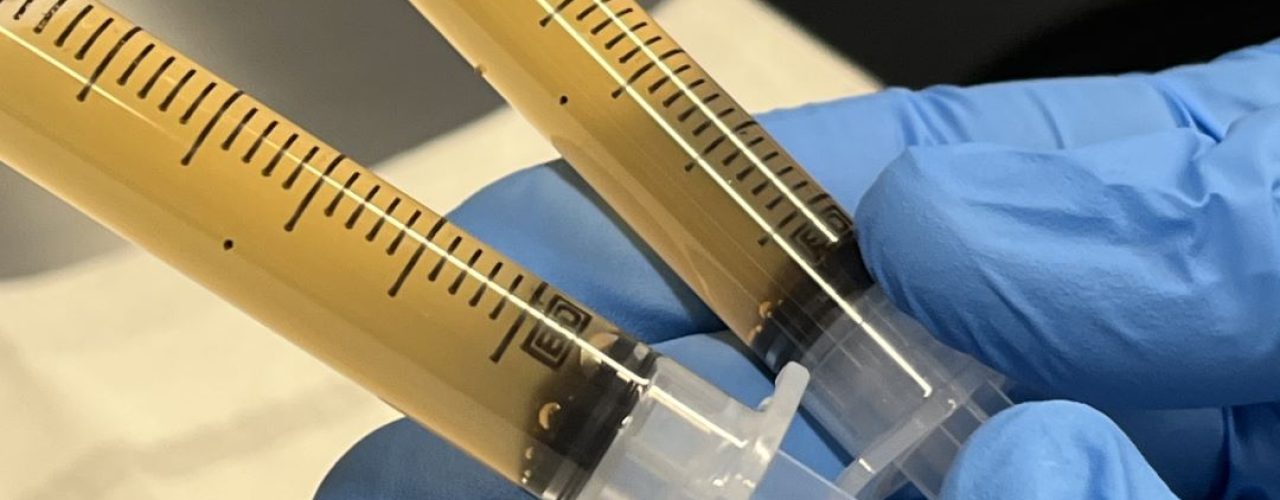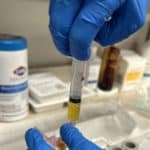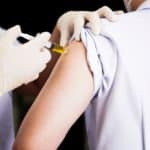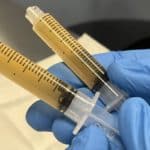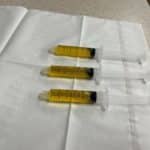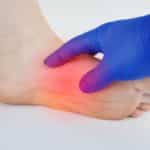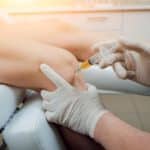Does having musculoskeletal injuries disrupt your daily life and cause constant pain? Is going through surgery scaring you and causing you sleepless nights? Let go of the pain and embrace a healthy body with the breakthrough solution and remarkable results of Platelet-Rich Plasma (PRP).
PRP is popular first in the cosmetic treatments for removing acne scars and new hair growth. Have you ever known someone who used to struggle with hair loss or thinning hair, but now has amazing hair texture? PRP hair treatment must be the secret behind their transformation! PRP hair treatment wakes up the dormant hair follicles and encouraging hair growth to reach a new hair density.
And now, the use of PRP injections has gone throughout the world of physiotherapy, from the world’s top athletes to individuals suffering from musculoskeletal injuries every day.
It is now a game-changer for anyone seeking relief in Knoxville Regenerative Clinic. Let platelet rich plasma injections be your best choice of each initial treatment for curing orthopedic problems, rediscovering the joy of living pain-free and regaining a life without limitations.
Understanding the Science behind Platelet Rich Plasma (PRP) Therapy and Results
What are Platelets?
Platelets are tiny blood cells crucial to support wound healing. When we get injured, platelets rush to the tissue damage area and release important substances to help the healing process without blood clot.
Currently, scientists have found over 600 different molecules in these blood cells. Here’s how they work:
1) Cytokine and chemokine proteins are released to attract immune cells that fight off harmful germs and clear dead cells to avoid blood clot.
2) Growth factors are secreted to help new cells grow in the wounded area.
3) Angiogenic mediators help create an environment for new vessels to form during the healing process.
These substances released by platelets influence nearby cells and help repair tissues in our body.
How Platelet Rich Plasma is Generated?
PRP is a treatment generated from a patient’s own blood. The general manufacturing process involves collecting the patient’s blood (blood draw) and spinning it at high speed. This spinning separates the blood components, resulting in a top transparent liquid with concentrated platelets that is more than four times higher than normal.
This platelet-rich liquid, known as PRP, is then activated using thrombin and calcium chloride to form a gel-like structure and finally injected or placed on the injection site to stimulate the healing process.
Choosing a Right Platelet Rich Plasma Procedure
However, currently, there are at least 17 different commercial procedure available to produce PRP, and each procedure can result in PRP products with varying compositions and characteristics. Three key technical features have great impacts on the therapeutic efficacy of PRP treatment: Platelet count, activation method and the presence of leukocytes.
It is crucial for healthcare professionals to select the appropriate PRP procedure based on the patient’s specific needs (e.g., as adjunctive treatments or maintenance treatments) and the desired therapeutic outcomes.
Terrifically Measurable Results of PRP Treatment in Labs
Since PRP was first discovered by Dimond in 1914 and its function to promote cell growth was identified by Ross in 1974, the clinical application of PRP injections has been extensively investigated in the field of orthopedic treatment.
PRP has shown the ability to significantly increase the growth rate of stem cells by up to four times for 14 days. Moreover, when PRP is present at a concentration of 2%-5%, it can further activate proliferative bone cells by encouraging a process called “osteogenic differentiation”.
In vivo studies have also demonstrated the effectiveness of PRP injections combined with stem cell therapy in inducing bone regeneration. When implanted in the canine mandible, this combined injections have shown promising results to promote the repair of a cartilage defect in the injection site within 16 weeks.
Amazing Effective Treatment Options for Most Patients
The first PRP treatment
Most importantly, PRP injection has emerged as a promising treatment option for a range of clinical conditions, including dental osteointegration, unions of fractures and distraction osteogenesis in clinics. Its initial use in clinical practice dates back to 1987 when Ferrari performed a heart surgery and no complications were reported from this procedure.
The development of PRP treatment
Afterwards, PRP injections expanded in the world of bone-related surgeries. A system review conducted by Sinclair et al. evaluated the therapeutic efficacy of PRP on fractures and non-unions in 39 papers including trials. This review has highlighted its excellence in promoting the repair of fracture and non-union as well as its potential effect to promote healing.
Moreover, PRP therapy results significant advancements in the success of titanium implants and the improvement of the clinical stability of bone grafts, leading to sustained outcomes for up to 12 months.
Therefore, PRP is a beneficial substance helping cells grow and specialize into bone cells, which supports wound healing and ultimately reduces pain.
Benefits of Platelet Rich Plasma Injections
Indeed, as a novel therapeutic approach for relieving pain and promoting musculoskeletal healing, PRP treatment has a wide range of benefits beyond the traditional orthopedic treatments, in addition to its promising therapeutic efficacy.
1. Non-invasiveness
PRP treatment is a non-invasive procedure through the injection of platelets into the injured sites, which reduces pain and shortens recovery time. In contrast, surgery as the most common conventional orthopedic treatment requires incision and anesthesia, which is invasive and leads to scarring and a longer recovery time.
2. Safety
PRP reduces the risk of rejection as it is derived from the patient’s own blood. What’s more, the concentration of biologically active substances within PRP can be adjusted appropriately according to the patient’s specific requirements before injection, minimizing the risk of adverse effects induced by drug interactions and allergic reaction. This approach is tailored to patients with optimal safety and effectiveness.
However, traditional orthopedic treatments, such as surgery and the implantation of foreign materials, carry inherent risks, inducing potential complications (e.g., infections and blood clots) and adverse reactions (e.g., rejection).
3. Cost-effectiveness
Synthesizing the growth factors necessary for bone regeneration individually is a time-consuming and expensive process, and its long-term storage poses significant challenges.
However, PRP treatment provides a ready-made solution as it contains a multitude of naturally made growth factors and is available in large quantities at a time. What’s even more advantageous is that these proteins remain clinically stable in platelets, ensuring prolonged storage and effectiveness within the body.
Therefore, PRP treatment provide a cost-effective alternative to the expensive traditional orthopedic treatments such as long-term usage of rigid braces, while also providing expect results.
Conclusion
PRP injections offer promising treatment options to revolutionize the treatment of musculoskeletal injuries. The cocktail of growth factors in PRP can promote healing extensively and efficiently, consequently facilitating the repair of treated area, alleviating pain and improving the patient’ quality of life.
PRP treatments are simple to use, non-invasive and safe, making it an attractive alternative to conventional orthopedic procedure for patients. However, delivery routes, timing, injection sites, concentration and the active degree of PRP are important for the therapeutic efficacy of PRP injections as additional treatments.
Therefore, it is essential to find a healthcare professional to select the appropriate PRP procedure for the desired results and therapeutic outcomes for each patient.
References:
- https://www.orthopedicsportsdoctor.com/blog/how-prp-is-helping-professional-athletes-to-weekend-warriors-speed-their-recovery-from-sports-injury
- https://www.nature.com/articles/nrrheum.2013.141
- https://pubmed.ncbi.nlm.nih.gov/20767362/
- https://pubmed.ncbi.nlm.nih.gov/4208546/
- https://www.nature.com/articles/boneres201636
- https://pubmed.ncbi.nlm.nih.gov/15265313/
- https://pubmed.ncbi.nlm.nih.gov/3570542/
- https://pubmed.ncbi.nlm.nih.gov/21886692/

